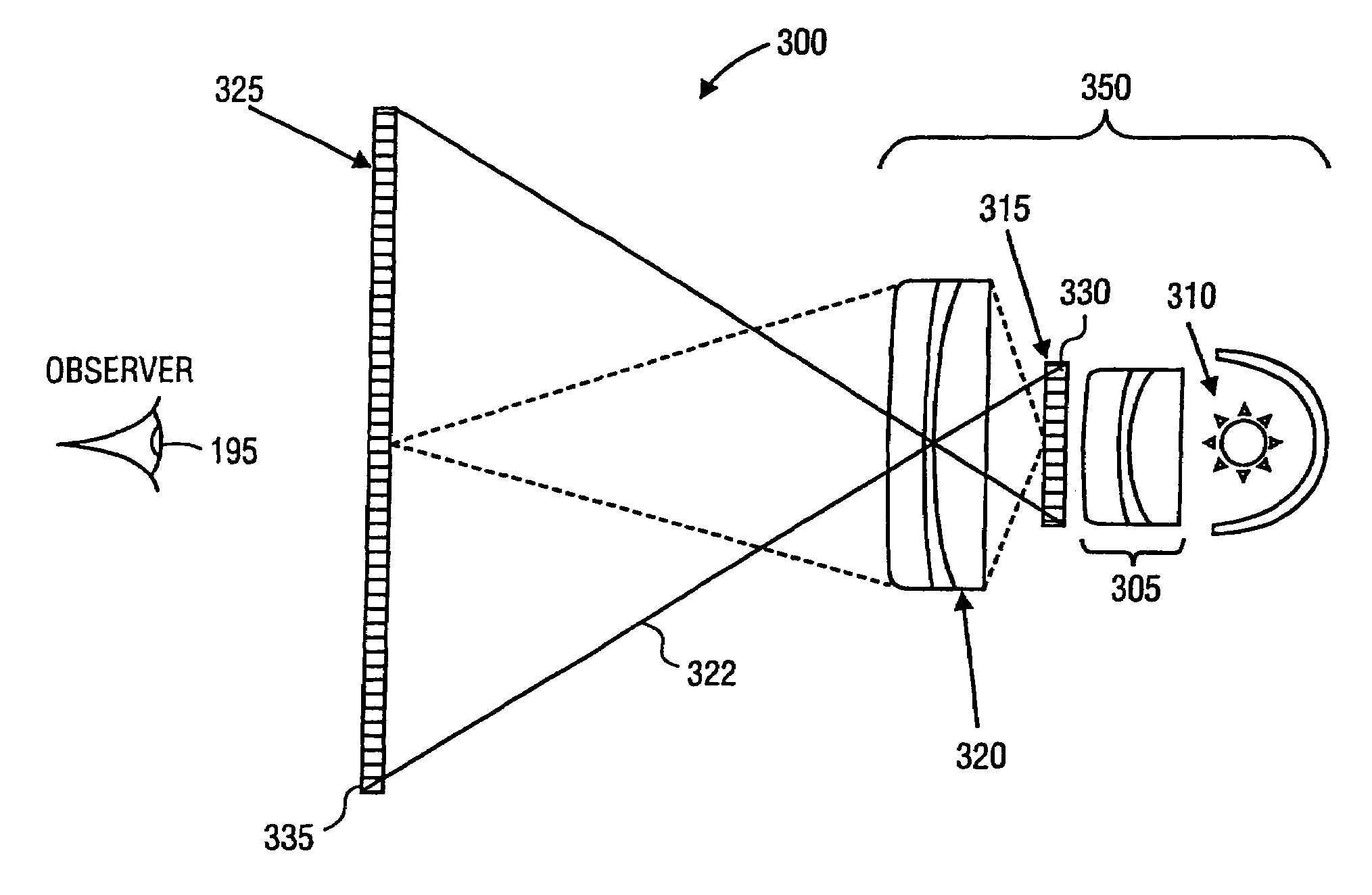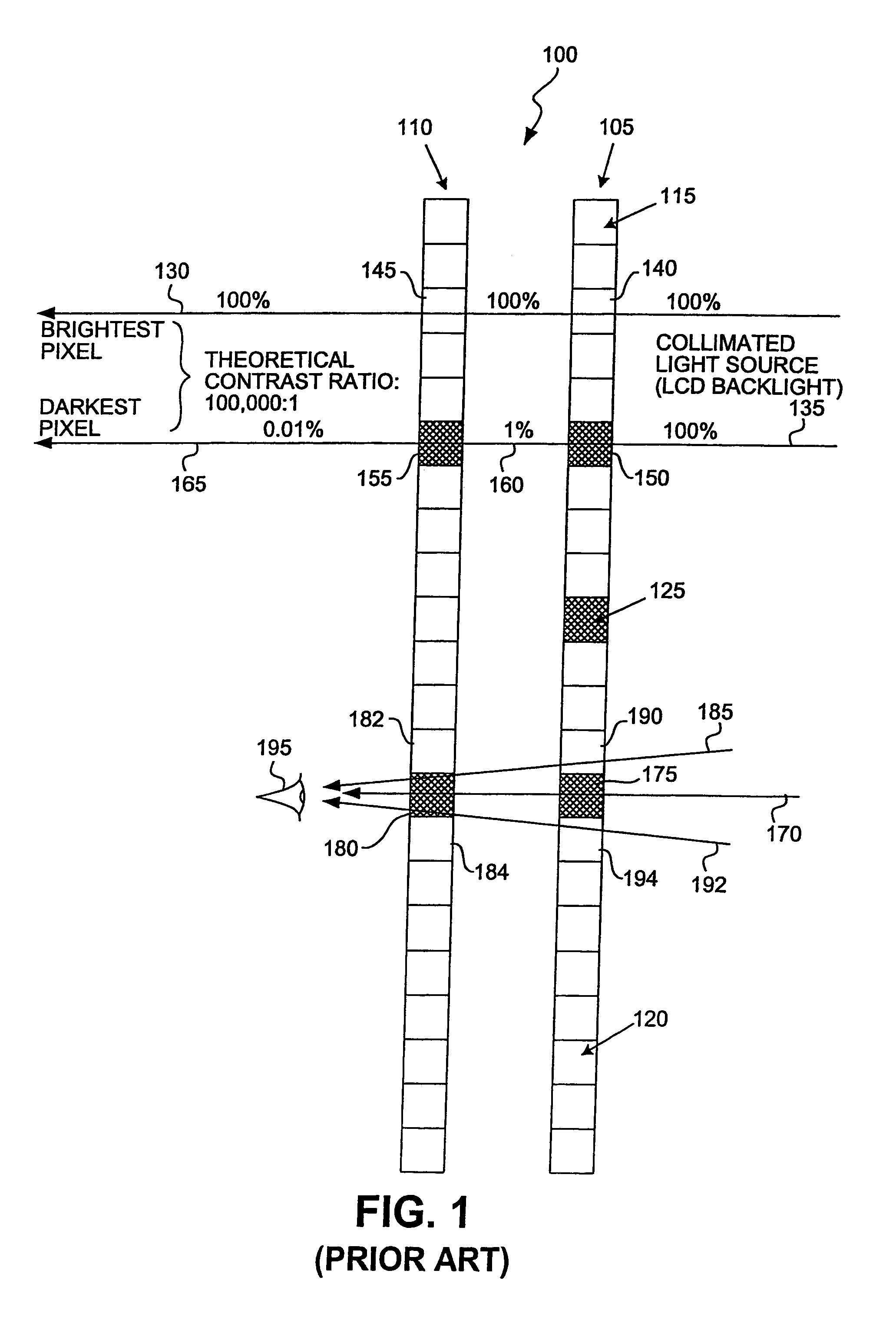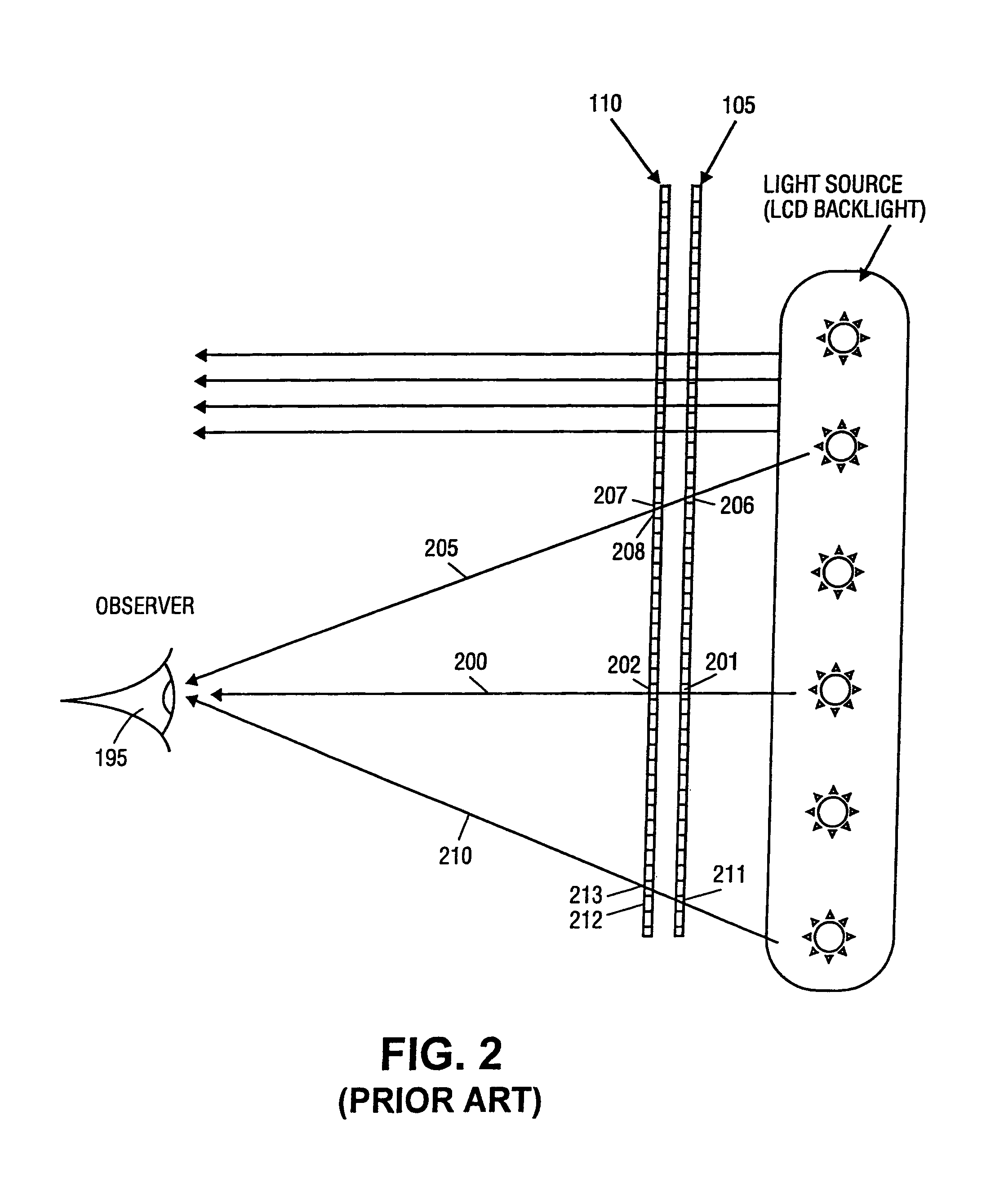Dual-stage high-contrast electronic image display
a display and electronic technology, applied in the field of electronic image displays, can solve the problems of slowing down the adoption of digital radiography among physicians, the contrast ratio of crt or lcd displays is still very low compared to the contrast ratio produced, and the performance of electronic displays cannot match the performance of traditional displays, etc., to achieve high contrast ratios, simple and inexpensive methods, and high contrast ratios
- Summary
- Abstract
- Description
- Claims
- Application Information
AI Technical Summary
Benefits of technology
Problems solved by technology
Method used
Image
Examples
first embodiment
[0033] the invention comprises a dual display system in which two panels of identical spatial resolution are imaged one onto the other. The same electronic data (e.g. video signal or digital image file) are sent to both displays. Because of the multiplicative effect of cascaded displays, the contrast ratio of the combined display is a product of the contrast ratios of the front and rear panels. Rather than having two panels of the same size, some embodiments have a smaller panel (for example, a rear-projection LCD panel) that is imaged onto a larger panel through a projection lens. Preferably, both the smaller and the larger panels have the same number of total pixels.
[0034]Such an embodiment is illustrated in FIG. 3. Display device 300 includes lens assembly 305, which directs light from light source 310 to rear display 315. Projection lens assembly 320 focuses light from pixels of rear display 315 to corresponding pixels of front display 325. For example, light ray 322 emanates fr...
second embodiment
[0037] rear display 315 is not transmissive, but instead is reflective. The principle remains the same: the projected image from rear display 315 is focused onto front display 325 in lieu of the traditional backlight.
[0038]This second embodiment is illustrated in FIG. 4. Display device 400 includes lens assembly 305, which directs light from light source 310 to rear display 315. Projection lens assembly 320 focuses light from pixels of rear display 315 to corresponding pixels of front display 325, as described above. As shown in FIG. 4, lens assembly 305 preferably includes one or more field lenses.
[0039]In such embodiments, rear display 315 preferably includes a digital light processing (“DLP”) device, also known as a digital micromirror device (“DMD”). A DLP is a chip that may include from 800 to more than 1 million mirrors. Each mirror rests on support hinges and electrodes, which allow each mirror to be controlled independently of the other mirrors. When a voltage is applied to ...
PUM
 Login to View More
Login to View More Abstract
Description
Claims
Application Information
 Login to View More
Login to View More - R&D
- Intellectual Property
- Life Sciences
- Materials
- Tech Scout
- Unparalleled Data Quality
- Higher Quality Content
- 60% Fewer Hallucinations
Browse by: Latest US Patents, China's latest patents, Technical Efficacy Thesaurus, Application Domain, Technology Topic, Popular Technical Reports.
© 2025 PatSnap. All rights reserved.Legal|Privacy policy|Modern Slavery Act Transparency Statement|Sitemap|About US| Contact US: help@patsnap.com



